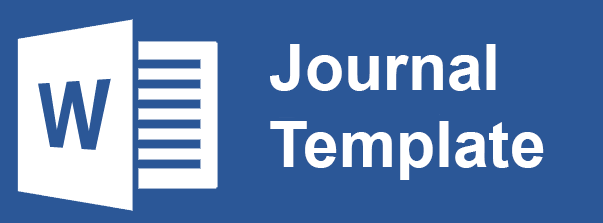PROBLEMATIKA LITERASI STATISTIK BERDASARKAN TINGKAT ADVERSITY QUOTIENT (AQ) PADA PESERTA DIDIK
Abstract
Keywords
References
Büscher, C. (2022). Design Principles For Developing Statistical Literacy In Middle Schools. Statistics Education Research Journal, 21(1). https://doi.org/10.52041/serj.v21i1.80
Dewanto, M. D., Budiyono, & Pratiwi, H. (2019). The experiment of TAPPS, TSTS, and DL learning models viewed through adversity quotient in mathematics learning achievement. IOP Conference Series: Earth and Environmental Science, 243(1). https://doi.org/10.1088/1755-1315/243/1/012124
Domu, I., Pinontoan, K. F., & Mangelep, N. O. (2023). Problem-based learning in the online flipped classroom: Its impact on statistical literacy skills. Journal of Education and E-Learning Research, 10(2), 336–343. https://doi.org/10.20448/jeelr.v10i2.4635
Gould, R. (2017). Data Literacy Is Statistical Literacy. Statistics Education Research Journal, 16(1), 22–25. https://doi.org/10.52041/serj.v16i1.209
Gunawan, Ulia, N., Akhsani, L., & Untarti, R. (2023). Statistical Literacy Process of Prospective Mathematics Teachers: A Case Study of Pisa Model Problems. Journal of Higher Education Theory and Practice, 23(7), 45–58. https://doi.org/10.33423/jhetp.v23i7.6011
Hastuti, T. D., Sari, D. R., & Riyadi. (2018). Student profile with high adversity quotient in math learning. Journal of Physics: Conference Series, 983(1). https://doi.org/10.1088/1742-6596/983/1/012131
Hee, O. C., Ping, L. L., Rizal, A. M., Kowang, T. O., & Fei, G. C. (2019). Exploring lifelong learning outcomes among adult learners via goal orientation and information literacy self-efficacy. International Journal of Evaluation and Research in Education, 8(4), 616–623. https://doi.org/10.11591/ijere.v8i4.20304
Hidayat, W., Noto, M. S., & Sariningsih, R. (2019). The influence of adversity quotient on students’ mathematical understanding ability. Journal of Physics: Conference Series, 1157(3), 1–7. https://doi.org/10.1088/1742-6596/1157/3/032077
Hulaikah, M., Degeng, I. N. S., Sulton, & Murwani, F. D. (2020). The effect of experiential learning and adversity quotient on problem solving ability. International Journal of Instruction, 13(1), 869–884. https://doi.org/10.29333/iji.2020.13156a
Kartika Sari, C., Ratri Aryuna, D., Sari, C. K., & Aryuna, D. R. (2016). The Profile of Students’ Thinking in Solving Mathematics Problems Based on Adversity Quotient. Journal of Research and Advances in Mathematics Education ISSN, 1(1), 36–48. https://doi.org/10.23917/jramathedu.v1i1.1784
Özmen, Z. M., & Baki, A. (2021). Statistics Instructors’ Perceptions of Statistics Literacy in Different Undergraduate Programs. International Journal of Research in Education and Science, 7(3), 852–871. https://doi.org/10.46328/ijres.1817
Palinkas, L. A., Horwitz, S. M., Green, C. A., Wisdom, J. P., Duan, N., & Hoagwood, K. (2015). Purposeful Sampling for Qualitative Data Collection and Analysis in Mixed Method Implementation Research. Administration and Policy in Mental Health and Mental Health Services Research, 42(5), 533–544. https://doi.org/10.1007/s10488-013-0528-y
Prasetyo, M. A., Hayati, L., Salsabila, N. H., & Turmuzi, M. (2024). Pengaruh Adversity Quotient (AQ) Terhadap Kemampuan Literasi Statis Siswa. Pendas: Jurnal Ilmiah Pendidikan Dasar, 9(2), 2548–69509. https://doi.org/10.23969/jp.v9i2.17014
Sabbag, A., Garfield, J., & Zieffler, A. (2018). Asessing Statistical Literacy and Statistical Reasoning: The REALI Instrument. Statistics Education Research Journal, 17(2), 141–160. https://doi.org/10.52041/serj.v17i2.163
Stoltz, P. G. (1997). The Most Important Factor iin Achieving Success Adversity Quotient Turning Obstacles into Opportunities. John Wiley & Sons, Inc.
Suryadi, B., & Santoso, T. I. (2017). Self-Efficacy, Adversity Quotient, and Students’ Achievement in Mathematics. International Education Studies, 10(10), 12. https://doi.org/10.5539/ies.v10n10p12
Wang, X., Yan, Z., Huang, Y., Tang, A., & Chen, J. (2022). Re-Developing the Adversity Response Profile for Chinese University Students. International Journal of Environmental Research and Public Health, 19(11). https://doi.org/10.3390/ijerph19116389
Wijaya, A. (2016). STUDENTS’ INFORMATION LITERACY: A PERSPECTIVE FROM MATHEMATICAL LITERACY. Journal on Mathematics Education, 7(2), 73–82. https://doi.org/10.22342/jme.7.2.3532.73-82
Yuniarti, D. A. F., & Putra, B. J. M. (2021). Analysis mathematical communication ability of vocational student in osborn learning based on adversity quotient. Journal of Physics: Conference Series, 1836(1). https://doi.org/10.1088/1742-6596/1836/1/012045
Yustiana, Y., Kusmayadi, T. A., & Fitriana, L. (2021). Mathematical problem solving ability of vocational high school students based on adversity quotient. Journal of Physics: Conference Series, 1806(1). https://doi.org/10.1088/1742-6596/1806/1/012092
DOI: http://dx.doi.org/10.25157/jwp.v12i2.18287
Refbacks
- There are currently no refbacks.
Copyright (c) 2025 Jurnal Wahana Pendidikan

This work is licensed under a Creative Commons Attribution-ShareAlike 4.0 International License
Indexing:



